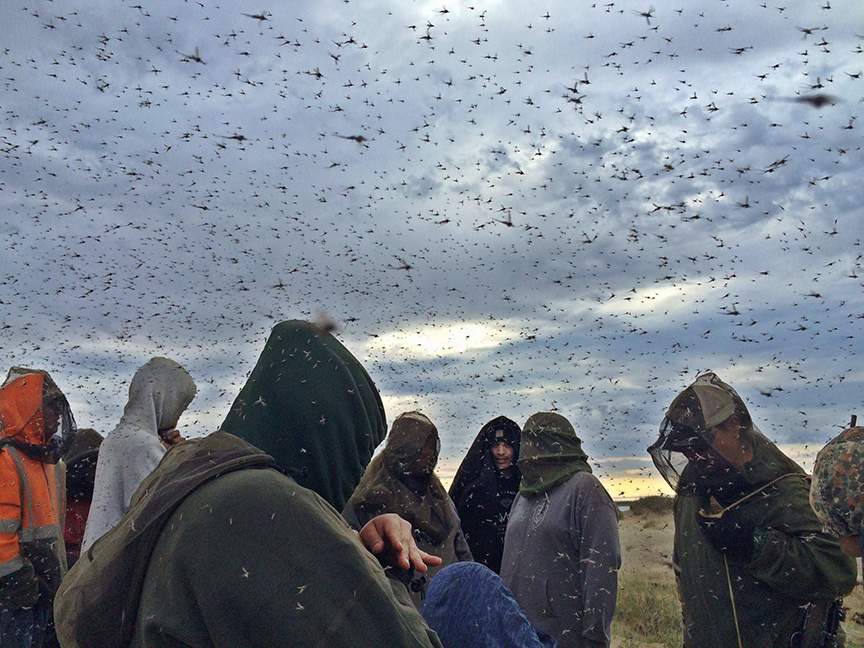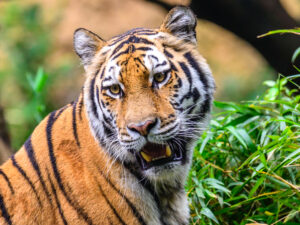“A cloud of cumbrous gnats do him molest,
All striving to infix their feeble stings,
That from their noyance he no where can rest.”
– Edmund Spenser, The Faerie Queene (1552-1559)
Most of us can sympathize with Spenser’s hero. In some places, hungry flies can turn summer into hell on earth. We can tell ourselves that every living creature has its role in nature, but even the Dalai Lama admits that compassion for the mosquito is difficult after the third bite.
Today, we have many ways to fend off mosquitoes and black flies, but they all carry minuses: the repellent DEET is oily and dissolves plastics and nylon. Insect-proof clothing turns hot days into sweatfests. You can barely see through a head net, especially when looking into the sun. Relieving yourself outdoors takes preparation, timing, and speed.
Even when you’re well-armored against bites, mosquitoes and black flies are so abundant in parts of the North that they dominate one’s consciousness. Close your eyes at the end of a day and all you see are specks, specks, specks.
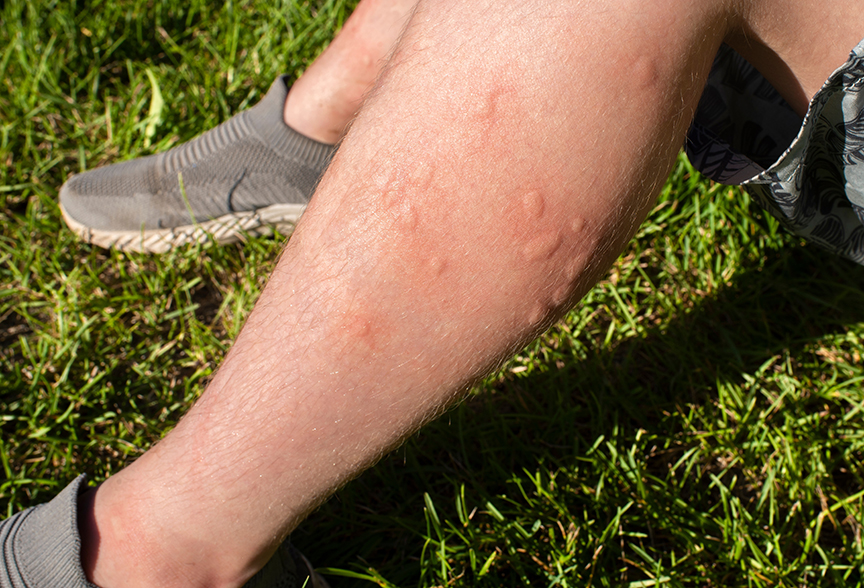
Photo: Shutterstock
No-see-ums and deer flies add their personalities to the torment mix. No-see-ums combine near-invisibility with a bite vastly out of proportion to their size. They aren’t dubbed flying jaws for nothing. And deer flies exhibit a maddening stubbornness once they start orbiting you on a sunny day. But their numbers don’t compare to those of mosquitoes and black flies.
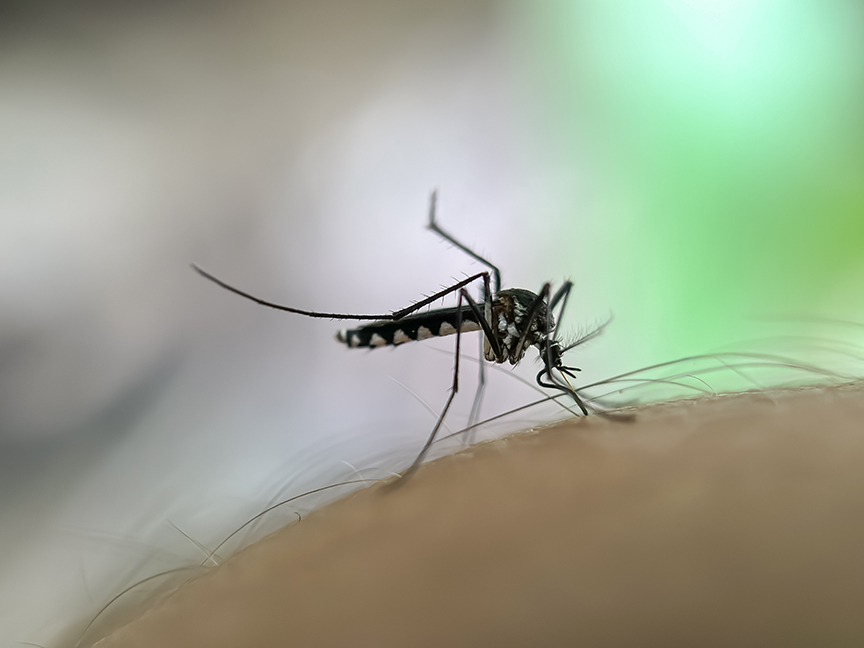
Photo: Shutterstock
Blue jeans turn grey
Whatever the blood-hungry insect, the North serves them up like no other place on Earth. Where else can blue jeans turn grey with mosquitoes, or your hand leave an imprint in squished flies on your partner’s back? Yet travelers still rave about their tundra trips and chalk the bugs up as one more challenge overcome, like a difficult portage or a bear shooed from camp. Afterward, the welts and scabs feel like hard-won medals from a true adventure.
But does it really have to be so brutal? Drawing from local lore and historical accounts from agonized explorers, plus briefs from bug-obsessed biologists, this guide to winged misery lets you know your enemies –- the better, as Sun Tsu points out in The Art of War, to have them at your mercy.
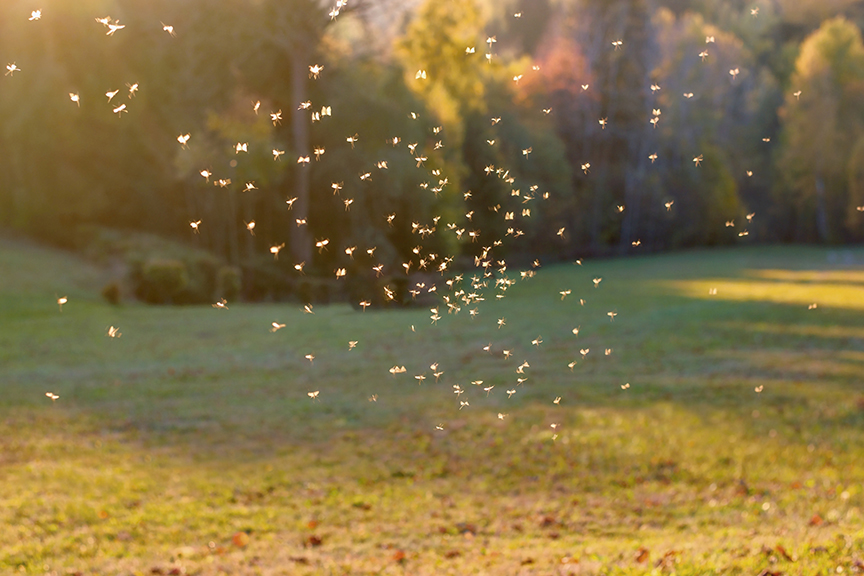
Photo: Shutterstock
12.5 million mosquitoes per hectare
Studies of our mosquito and black fly populations are rare –- would you want to earn your PhD counting blood-sucking insects? — but a few hard-bitten researchers have unearthed shocking results. The Hudson Bay lowlands have 12.5 million mosquitoes per hectare of a single species, and you need to multiply that at least threefold to account for the other mosquito species present.
Some boreal rivers in Canada have 750,000 black fly larvae per square meter. Black fly larvae on a single river in northern Sweden produce 69 tonnes of excrement per day. That’s just their excrement.
The clearest picture of mosquito and black fly numbers comes from accounts of afflicted explorers.
“Backs and hats were brown with the vicious wretches,” wrote northern traveler H. Hesketh Prichard, who devoted a whole horrified chapter of his 1911 book, Through Trackless Labrador, to what he called the Kingdom of Beelzebub.

Photo: Florence and Stephen Tasker, 1906
Indescribable
“What these mosquitoes are is indescribable,” Prichard continued. “They give no rest, no peace. Day and night they go on and on and on.”
“Nearly demented,” he noted in his journal a day later.
Naturalist Ernest Thompson Seton may have left the best literary record about northern mosquitoes. He regarded the Grey Terror with a scientific enthusiasm that belies how unpleasant his experiences were.
“On six square inches of my tent, I counted 30 mosquitoes, and the whole surface was similarly supplied,” he recalls in his 1911 classic, The Arctic Prairies. “That is, there were 24,000 on the tent…They reminded us of Klondike gold-seekers. Thousands go; great numbers must die a miserable death; not more than one in 10,000 can get away with a load of the coveted stuff, and yet each believes that he is to be that one, and pushes on.”
Mosquito gauge
Seton’s most memorable invention was his mosquito gauge: “Mere adjectives could not convey any idea of their terrors,” he explained. So as he traveled different parts of Canada’s Northwest Territories, he periodically removed his glove, then tallied the number of mosquitoes that alighted on the back of his hand in five seconds.
In one spot, he counted five to 10; near Fort Resolution, 20 to 40. But deep in the Barren Grounds, that area of tundra ponds, streams, and mossy plains north of Manitoba, took the record: 100 to 125 mosquitoes on one hand in five seconds.
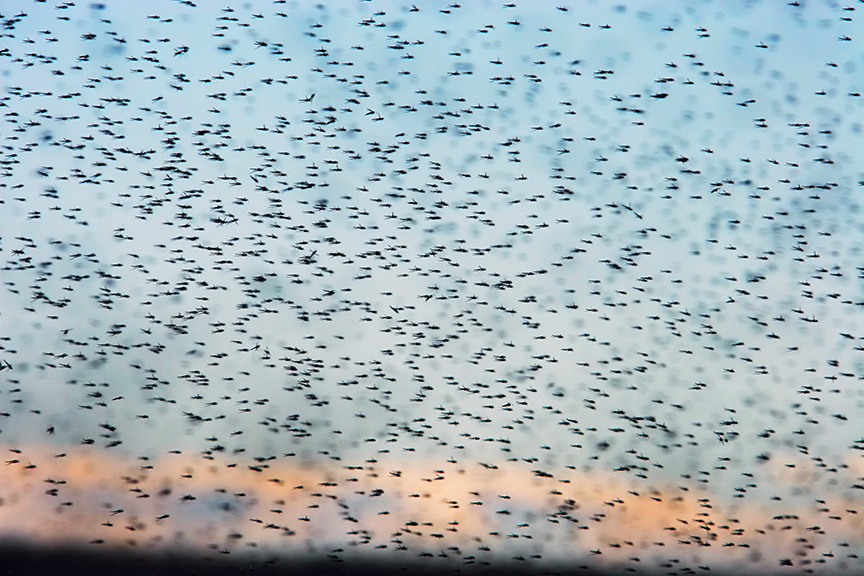
Mosquito swarm. Photo: Shutterstock
“It was possible to number them only by killing them and counting the corpses,” he writes.
As the contrast between Seton’s curiosity and Prichard’s anguish suggests, some of us are psychologically more pained by swarming flies than others. It’s not just stoicism. Even the tough First Nations people, who endured this yearly plague for centuries, were hardly indifferent. When explorer Knud Rasmussen traveled across northern Canada early in the 20th century, he found that the second most popular trade item, after sewing needles, was mosquito netting. The people he met may have been tough, but they weren’t crazy.
‘Little fly’
Mosquitoes –- Spanish for “little fly” –- have been on earth for more than 100 million years. They’ve sunk their proboscises into everything from velociraptors to early hominids.
Currently there are about 3,500 species worldwide, and 74 in Canada and Alaska. Just two cold-resistant types inhabit the arctic islands, and their numbers taper the farther north you go. The High Arctic has hardly any, except in mild enclaves called polar oases.
But as the climate warms, their beachhead is expanding: Residents of normally mosquito-free Grise Fiord, the northernmost village in Canada, have noticed a few in recent summers. Even though there currently aren’t many, “people freak out when they see one or two,” says one resident.
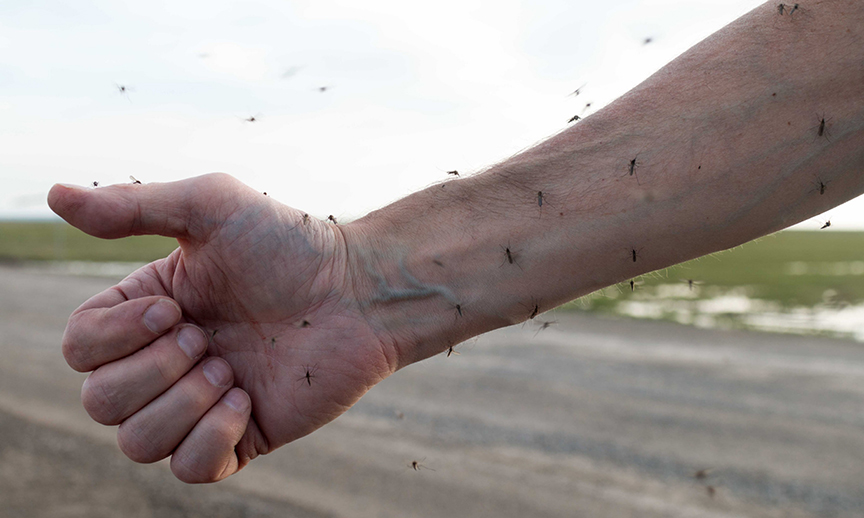
Photo: Shutterstock
According to a native legend, originally there were just two mosquitoes. They were tall as pine trees and ate people whole. When men finally surrounded and killed them, swarms of tiny replicas sprang from their spilled blood. Today, they bite us out of revenge.
The voyageurs believed that a certain saint, banished from heaven for disobedience, had to live alone for eons in an uninhabited part of the world as punishment. In her loneliness, she prayed for a few flies to keep her company. She didn’t expect the flies to bite. When the saint was let back into heaven, the flies stayed on earth to remind us of the folly of trying to distract from the consequences we’ve brought on ourselves.
The world’s most dangerous animal, mosquitoes carry West Nile virus, encephalitis, and many other diseases, especially malaria. Malaria infects 247 million people worldwide each year and kills a million. A simple mosquito bite single-handedly transmits the disease, says the World Health Organization.
Airport malaria
Discounting travelers who bring back the disease from overseas, the main incidence in some places is so-called airport malaria, caught near airports from disease-bearing mosquitoes that have hitched on international flights.
Only female mosquitoes bite (so they can nourish their eggs with blood’s protein). They hunt their prey like a homing missile. When a mosquito detects carbon dioxide from breath –- from as far as 35 meters away — it flies a zigzag course toward higher concentrations to locate the source.
As it closes in, other cues take over, including body odor, heat, and sight. Perfume attracts them, as do stinky feet, which contain an alluring bacteria also found in Limburger cheese. When mosquitoes are about three meters away, they use sensitive thermal receptors on their antennae to locate blood beneath the surface of the skin.
The range of these receptors triples in high humidity. While black flies gnaw a messy crater and then lap up the pooling blood, mosquitoes insert a double-barreled straw. Through one straw, they inject an enzyme that inhibits clotting and causes itching and a bump on the skin. They use the other straw to suck up blood.
Three times its weight in blood
A mosquito can drink up to three times its weight in blood, but it would take more than a million bites to drain all the blood from an adult human. Urban myths aside, this couldn’t happen, even to a naked person on the tundra, because swelling would create a watery fluid barrier that would keep late-arriving legions from accessing the blood.
Still, the number of bites a body would have to endure in order to reach this agonizingly swollen, protective phase would be in the thousands. One researcher inserted his bare arm into a cloud of mosquitoes and got 289 bites in a minute.
Less ubiquitous than mosquitoes, black flies still terrorize bush country, attacking in clouds. Burrowing through the protective fur of mammals to the soft skin beneath, black flies are particularly –- some say diabolically -– adept at finding their way through the smallest chinks in clothing. They also like ears, scalps, wrists, ankles, the belt line, and other areas where clothing has pinched the skin tight.
The small white stripes on the legs of our most common species give rise to one of their many nicknames, white socks.
The tormentor
Worldwide, there are more than 1,250 species of black flies. In the Canadian North, where they are most abundant, they reach as far as Baffin and Banks Islands, but the High Arctic is blessedly free of them. The most common Barren Ground black fly has the species name of tormentor. Another northern species is irritatum. Scientists aren’t above putting their personal feelings into their work.
While mosquitoes hatch in stagnant water, black flies prefer running streams. The females lay their eggs (150 to 600 per season) on submerged objects. The larvae attach to rocks and underwater vegetation and filter feed on drifting nutrients. They’re sensitive to pollution, so the presence of black flies indicates clean water. A small consolation.
Black fly numbers increase toward sunset but they don’t bite at night. Nor do most species bite indoors. This includes tents, houses, and even vehicles with open windows.
inside, black flies become disoriented. In a tent, for example, they lose interest in biting and crawl up the netting, trying to escape. It’s easy to unzip the door and brush them outside. For campers, it’s a welcome reprieve from sneaky mosquitoes, which will bite indoors night and day.
The black fly’s weak spot
Scientists aren’t sure why black flies don’t like a roof over their heads. “If we could bottle whatever it is, we could make a lot of money,” says entomologist Tom Chapman of Memorial University in St. John’s, Newfoundland.
Black flies sometimes swarm cattle in such numbers that they kill them. The cattle don’t die from blood loss but from anaphylactic shock. The saliva that the flies inject to keep blood from clotting can affect sensitive people too, especially after hundreds of bites.

Leonidas Hubbard’s two companions, wrapped up against fly bites. Photo: Leonidas Hubbard
Some northern expeditions, such as the famous 1903 Leonidas Hubbard expedition in Labrador, suffered from black fly fever. “They got into our nostrils, into our ears, into our mouths, into our eyes even,” wrote one of Hubbard’s companions. “They were villainous, hellish.”
Hubbard frequently remarked that the mosquitoes seemed friendly in contrast. “For ten days, I was fairly sick from the poison the [black flies] instilled.”
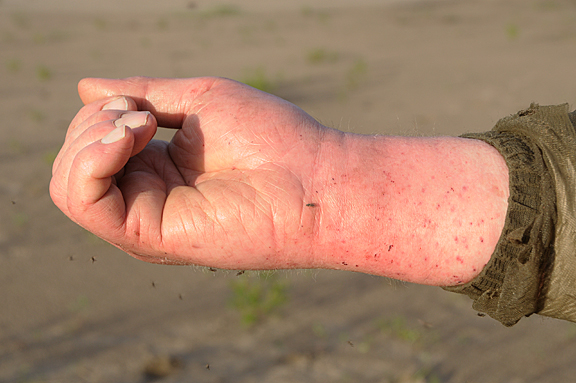
Black fly bites on a swollen wrist. Photo: Jerry Kobalenko
Deterrents
Monty Python once performed a skit in which mosquitoes were gunned down with automatic weapons and blown up with grenades. Although we might yearn for such revenge, quieter deterrents are more effective. Since 1957, DEET has been the gold standard in repellents. Developed by the military after World War II, DEET was thought to blind the insects’ senses so the biting instinct didn’t kick in.
It turns out this isn’t quite true. Recent studies suggest that DEET acts as a true repellent. Mosquitoes simply hate the smell of the chemical, even though it doesn’t seem to affect their ability to detect carbon dioxide.
DEET comes in sprays, oils, roll-ons, and lotions of varying strengths. You can still buy 100 per cent DEET in the United States, but Canada limits consumer products to 30 per cent or less because of the skin irritation some users suffer. Higher percentages of DEET don’t repel better; they just last longer.
An alternative repellent developed in the 1980s called Picaridin is reportedly as effective as DEET and doesn’t cause skin irritation. Unlike DEET, it also won’t dissolve the arms of your sunglasses or a plastic watch strap.
Dozens of traditional concoctions and modern inventions claim to keep biting flies at bay. None do as well as the certified test tube products, though. Citronella works for less than an hour. Avon Skin So Soft moisturizer is celebrated for its accidental repellent properties but also doesn’t last.
Ultrasonic devices and bug zappers do nothing. Neither do Vitamin B tablets. Garlic works for 20 minutes or so when rubbed on skin but not when eaten. And contrary to myth, bananas don’t attract biting flies, so eat away. But drinking beer does seem to make a person more attractive, at least to flies.
